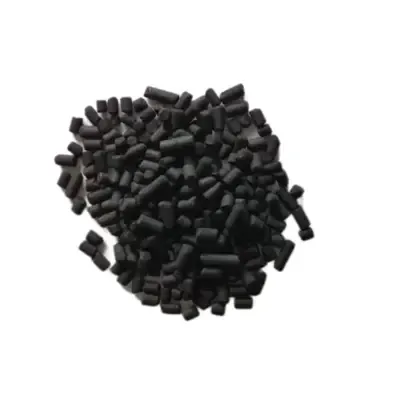
Activated carbon, a versatile and potent material, has become a linchpin in modern industries and daily life due to its remarkable adsorption properties. This black, granular substance is more than meets the eye—it possesses the capacity to purify air, water, and vari ous substances. In this exploration, we will delve into the diverse applications of activated carbon that underscore its indispensable role in enhancing environmental quality and human well-being.

1. Water Purification:
One of the most renowned applications of activated carbon is in water purification. The porous structure of activated carbon acts as a magnet for organic compounds, impurities, and even odorous substances. When water passes through activated carbon filters, these unwanted Substances are absorbed onto the surface of the carbon particles, leaving behind cleaner, clearer water. This process is instrumental in improving the taste, odor, and overall quality of drinking water. Activated carbon also finds its place in industrial settings, where it helps in the removal of contaminants from waste water before its discharge.
2. Air Filtration:
Air pollution is a growing concern, and activated carbon is a key player in mitigating this issue. Its capacity to absorb volatile organic compounds (VOCs), noxious gases, and undesirable odors has led to its incorporation in air purification systems. Whether it's used in home air purifiers, automotive cabin filters, or industrial exhaust systems, activated carbon contributes to creating healthier indoor and outdoor air environments.
3. Environmental Cleanup:
Activated carbon is a valuable tool in addressing environmental contamination. In spill response scenarios, activated carbon can be deployed to adsorb and remove oil, chemicals, and other pollutants from both soil and water. Its versatility in handling various subst ances makes it a sought-after solution for emergency environmental cleanups.
4. Medicine and Pharmaceuticals:
The medical and pharmaceutical fields recognize activated carbon as a potent remedy for poisonings and drug overdoses. Its adsorption capabilities allow it to trap toxins and harmful substances in the gastrointestinal tract, preventing their absorption into the bloodstream am. Activated carbon is also utilized in medical filters for blood purification, helping to remove toxins from patients' blood during procedures like dialysis.
5. Food and Beverage Industry:
Activated carbon finds application in the food and beverage industry, primarily for decolorization and deodorization. It is used to remove unwanted color and odor from products like sugar, alcoholic beverages, and edible oils, ensuring their aesthetic appeal and consumer ac ceptability.
6. Industrial Processes:
In industrial settings, activated carbon has diverse uses. It acts as a catalyst support in chemical processes, assists in the recovery of solvents, and plays a role in the separation of gases. The gold mining industry relies on activated carbon to extract gold from cy anide solutions, utilizing its exceptional absorption properties to capture the precious metal.
7. Challenges and Future Prospects:
While activated carbon's applications are extensive, challenges such as proper disposal of used carbon and sustainable sourcing of raw materials need attention. Researchers are exploring innovative ways to enhance the efficiency and reusability of activated carbon, pav ing the way for even broader applications.

In all, Activated carbon stands as a testament to human ingenuity in harnessing nature's properties for various beneficial purposes. From enhancing water quality to combating air pollution, from mitigating environmental contamination to aiding medical interventions, activated carbon has made its presence felt across numerous domains. As technology advances and our understanding deepens, the future promises even more innovative applications of this exceptional material, further enhancing our ability to create a cleaner, safer, and healthier world.